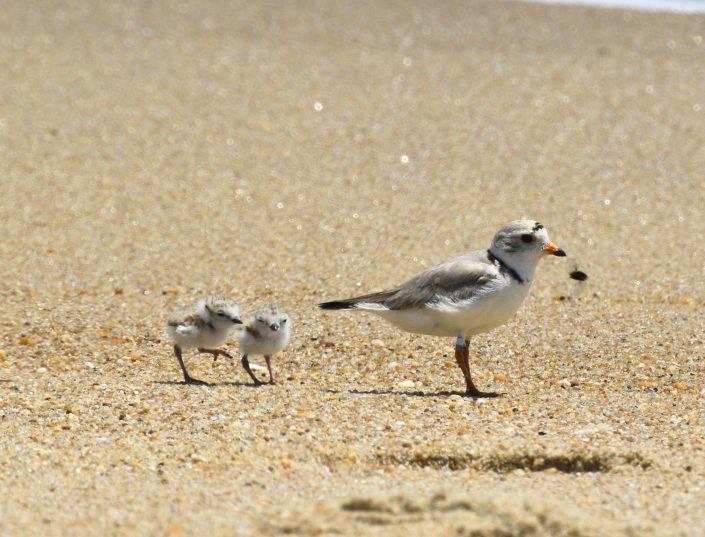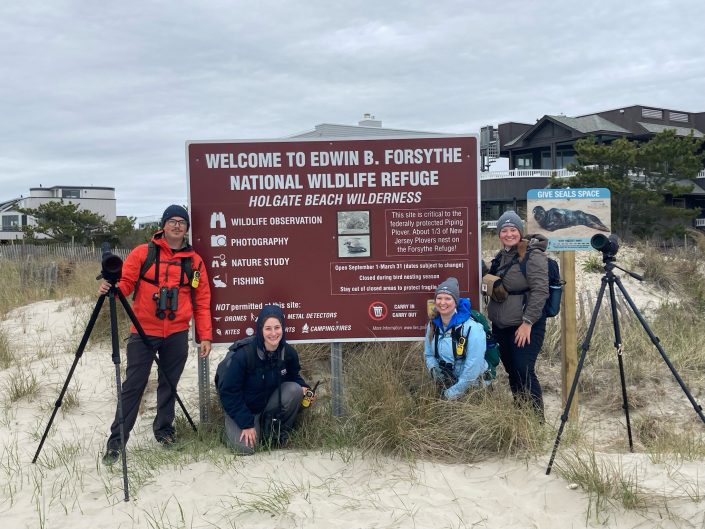How to Advocate for Beach-nesting Birds During the Holiday Weekends
By Sherry Tirgrath, Wildlife Biologist
As we approach the official, and unofficial, beginning of summer, many warm-weather loving citizens of New Jersey are pulling out their swimwear, purchasing their SPF and preparing to flock to the Jersey Shore and contribute to some of the worst traffic seen around the country. It’s important, however, to take a step back and remind oneself to be certain that their beach activities will not affect the livelihood of other creatures that are just trying to survive in the only habitat that can support them. Both Memorial Day Weekend and July 4th holidays occur during the season that beach-nesting birds are incubating eggs and raising chicks. This makes for some conflict between beachgoers and coastal wildlife, so it’s necessary to bring more awareness to the presence of the birds and the importance of giving them space.
Beach-nesting birds are called just that because they depend on undisturbed, sparsely vegetated, and stabile coastline to breed, lay eggs, and raise their young. They nest directly in the sand and their eggs are sand-colored and camouflaged against predators. This also makes them difficult for people to see, and without proper monitoring and protection measures, they can wind up being run over or stepped on. Small chicks, like those of the piping plover, are tiny and very mobile shortly after hatching. While the parents do their best at corralling their chicks and keeping them away from people, sometimes the chicks wind up under a beachgoer’s umbrella seeking shade or wandering too close to potential danger. Anyone with small children would understand the difficulty in keeping their kids from running off somewhere they’re not supposed to go, especially when they can have up to four of them at once. The chicks must forage to feed themselves, so being very mobile increases the likelihood of them finding small invertebrates to eat.



